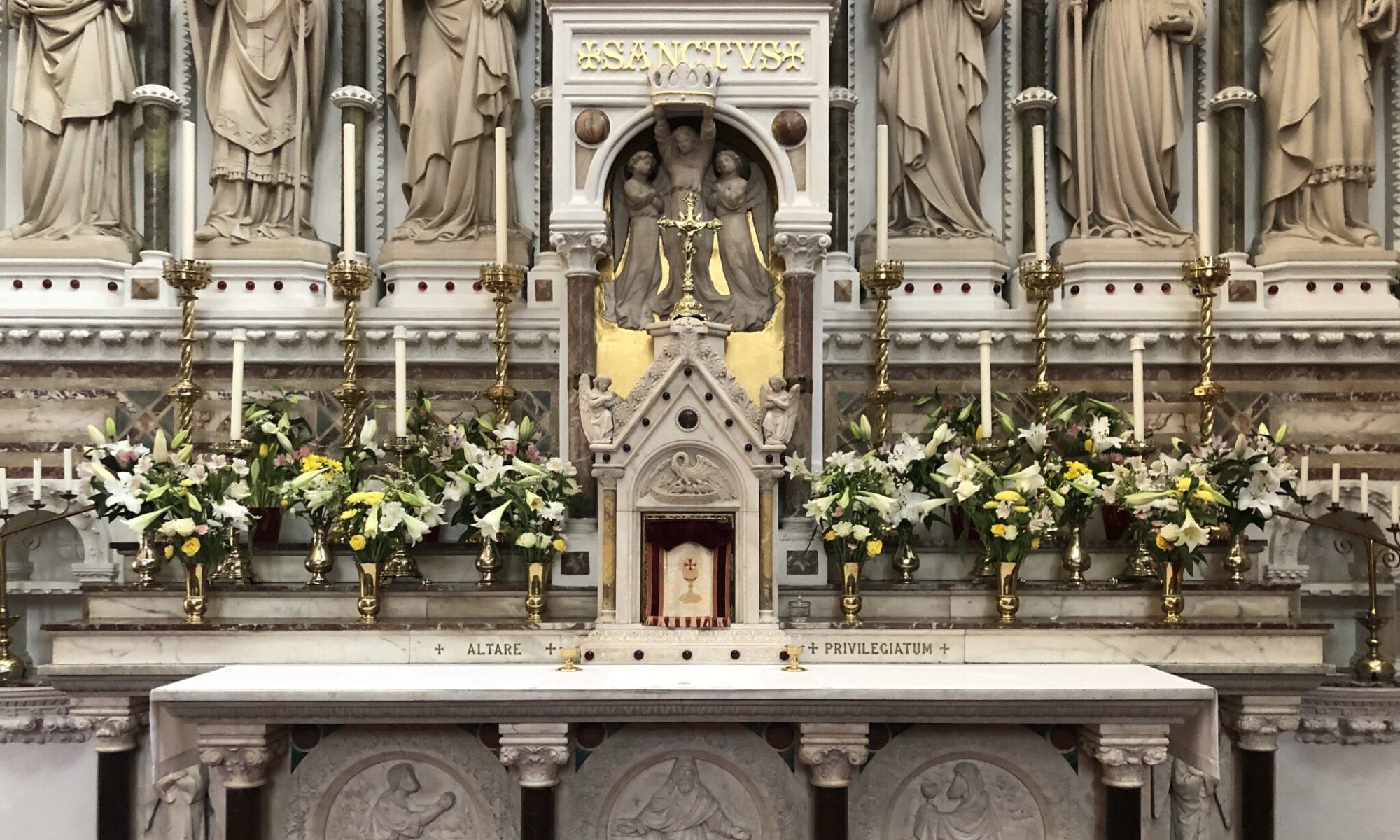Norman Adams’ Fourteen Stations of the Cross
By Sir Philip Dowson CBE RA, President, Royal Academy of Arts
Norman Adams Fourteen Stations of the Cross is one of the great ecclesiastical commissions in our country this century, and is an act of inspired patronage on the part of Canon Denis Clinch for St. Mary’s, The Hidden Gem, Manchester. Norman Adams considered them to be the greatest work of his life and I believe this to be true.
There is in these canvasses an expression of compassion intensely felt, which communicates immediately to people. Gentleness, terror, pain and suffering, within a frame of deep understanding and sympathy, distinguish these works. The events of the tragedy are told with the horror which leads from innocence to the Cross. It is a brave man who looks straight into the death mask in the crucifixion, or a man without feeling who would not be deeply moved by the tenderness of the laments in the Women of Jerusalem.
It is wonderful that these stations of the cross will have a permanent home in St. Mary’s Church, known as the “Hidden Gem” of Manchester. The Royal Academy is proud to have such a distinguished painter as a Member, and recognises the dedicated life-time’s work and experience which lies behind this great achievement.
The Devotion and The Commission for St. Mary’s
‘If anyone wants to be a follower of mine, let him renounce himself and take up his cross everyday and follow me’ . (Luke 9:23)
In the Gospels, Our Lord calls upon his disciples to follow his way of the cross. From the time of the Apostles, there has been a devotion to our Lord’s Cross. ‘As for me,’ says St. Paul, ‘the only thing I can boast about is the cross of our Lord Jesus Christ, through whom the world is crucified to me, and I to the world’ (Galatians 6:14).
The devotion of the Way of the Cross, the fourteen Stations of the Cross, arose in the Western Church during the 14th century. Most folk, then as now, could not make the pilgrimage to Jerusalem to follow the Via Dolorosa in the actual place of Our Lord’s Passion, the Way of the Cross allowed them to do so in their parish church.
The devotion is known too as the Stations of the Cross because traditionally it entails fourteen stops or stations for meditation, beginning with our Lord’s condemnation and ending with his burial in the tomb. From that last station one turns to our Saviour’s abiding risen presence in the blessed Eucharist.
“The Hidden Gem is Gem more than ever before with this most prayerful Stations on its sacred walls”
Sister Wendy Beckett, Quidenham Carmelite Community

In 1993, Canon Clinch asked Sister Wendy Beckett for her advice on the new Stations of the Cross needed for St. Mary’s. She very kindly supplied him with a list of possible artists. From the list, after careful interview with those named and much thought, Norman Adams RA was chosen. Sister Wendy wrote to say that the decision was an inspired one. Not only that, but Sister Wendy then wrote a profound piece on the Adams Stations that is published as part of the book on St. Mary’s stations that is sold for the benefit of the church. That means so much because she is justifiably recognised as one of the world’s greatest connoisseurs of art. Her praise and endorsement constitute a supreme accolade.
Professor Adams said himself that St. Mary’s Stations of the Cross is the great work of his life. It was always clear, as the pictures were taking shape, that a masterpiece was being created. The gentle goodness with which Norman and Anna face life is inspiring and inspires Norman’s painting genius to produce work of such remarkable spiritual quality and depth.
In his letter to the Colossians, St. Paul writes of Christ and the Church: “Now the Church is his body, he is its head”.
The Adams’ Stations, it seems to me, by their concentration on Christ’s head, not only express the interior sufferings of Our Lord, but also the unity of his Passion, through his Mystical Body the Church, with all the world’s sufferings. In the Gospels, it is Jesus’ solemn teaching that what is done to even the least is done to him. ‘Jesus will be in agony until the end of the world. There must be no sleeping during that time.’
(Pascal: Pensees: 919).
The power of the Adams Stations ensures wakefulness. They demand too the contemplative attention that all great art must be given if one is to enter into its meaning. No less careful attention is demanded than one would give to Beethoven’s Missa Solemnis or Gerald Manley Hopkins’ sonnets. The reward is equally sublime.


